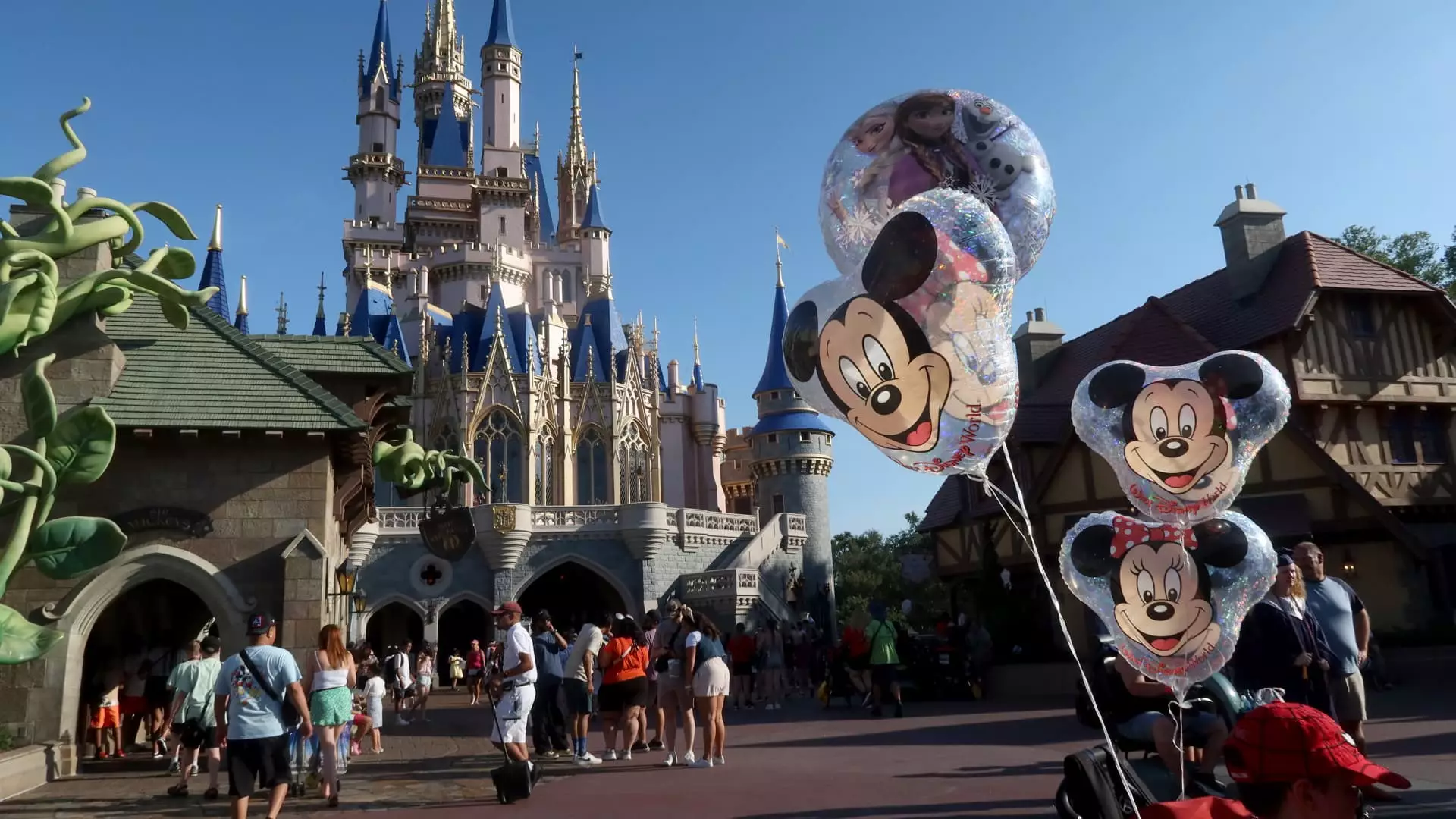As Disney prepares to unveil its fiscal first-quarter earnings, scheduled for Wednesday before the market opens, investor anticipation is palpable. Analysts are eager to evaluate the performance of Disney’s dual powerhouse sectors: its streaming services and theme parks. Each of these segments is critical in assessing the company’s overall health and future trajectory, especially as competition intensifies in the entertainment landscape.
Key Metrics to Watch
According to data gleaned from analysts surveyed by LSEG, Disney is projected to report earnings of $1.45 per share alongside a revenue figure of $24.62 billion. These numbers will serve as indicative markers of Disney’s ability to navigate its post-pandemic recovery and digital transformation. Investors will be keen to decipher the implications of these results, especially given Disney’s ambitious strategies aimed at regaining its market share in both streaming and traditional entertainment sectors.
The spotlight will undoubtedly be on Disney’s streaming performance. Historically, this sector has been a mixed bag for the company, oscillating between impressive subscriber growth and challenges in profitability. While Disney has made significant strides—having launched various initiatives like ad-supported subscription tiers and password-sharing restrictions to boost revenue—competition looms large. Recently, industry giant Netflix disclosed a surge to over 300 million subscribers, raising the stakes for Disney to enhance its own subscriber base. How Disney plans to leverage its vast content library and brand franchises to attract new viewers while retaining existing ones would be an essential part of the earnings dialogue.
Another aspect fueling investor optimism lies in Disney’s theme parks. The rebound of the parks amid a recovering tourism sector signifies a vital revenue source that complements the volatility of streaming. The recent quarterly results hint at a strong recovery for this segment, which has historically been a driver of profitability for Disney. Analysts and investors alike will focus on recent attendance figures, ticket sales, and expenditure per visitor during the earnings call, seeking reassurance that the parks can sustain their momentum.
Leadership Transition: The Iger Factor
With CEO Bob Iger’s anticipated departure set for early 2026, the company’s succession planning has become a focal point for the investment community. As the executive search unfolds, stakeholders are eager to hear any updates regarding potential successors and their vision for Disney. The leadership transition poses questions about strategic continuity, particularly in light of the ongoing shifts in both media consumption and consumer expectations.
As Disney approaches this crucial earnings report, the intertwining challenges posed by a fast-evolving streaming market, a competitive theme park landscape, and leadership changes create a complex backdrop for the company. Investors are not only looking for solid numbers but also insights into how Disney plans to navigate these multifaceted challenges moving forward. With the stakes higher than ever, all eyes are on Disney, making this earnings call a pivotal moment for the company and its shareholders.

